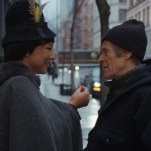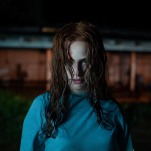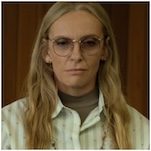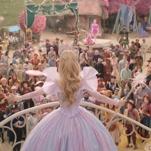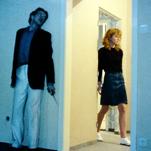Cubic Zirconia Are Forever: The Authenticity of Ocean’s Eight‘s Fakeness

The difference between an “authentic” transaction, one through which class ascension is “earned,” and the Robin Hooding of drugged rich Wall Street types is, in the opinion of strippers Ramona (Jennifer Lopez) and Destiny (Constance Wu), minute. For these Hustlers, it’s an exchange of money either way, cash that’s been stained by an implicit history of income and racial inequality. They aren’t merely getting theirs, but blurring the boundaries between performance and authenticity in the realms of sex and money, which aren’t that different anyway. “Doesn’t money make you horny?” Ramona asks as she passes new and naive Destiny.
The women of Lorene Scafaria’s Hustlers aren’t the only recent examples of cinematic career criminals preoccupied with the space between what’s real and what’s not. So, too, are the ladies of Ocean’s Eight, a 2018 spin-off of sorts from Steven Soderbergh’s remake of Ocean’s Eleven. The movie is a fake. It is hardly coy about that fact; after all, heist movies and films about con people are fixated on the lines separating the actual and the artificial. Following Debbie Ocean (Sandra Bullock), sister of the late Danny Ocean (George Clooney), and her lady rat pack of designers, fakers, crooks and criminals—all after a $150 million Cartier necklace that is to hang off the neck of Daphne Kluger (Anne Hathaway, playing a parodic version of herself) on the night of the Met Gala (always the first Monday in May)—Ocean’s Eight asks its characters to discern what’s fake and what’s not. Debbie knows that the American Dream is all about making money off of both.
Deep in the pre-production, as it were, of a heist, one of the Eight, Tammy (Sarah Paulson), creates a digital scan of said priceless Cartier necklace, a replica of which is then made from cubic zirconia. To the untrained eye, it looks just as good as the original, and good enough to swap with the “real” one that will be draped around the famous, kind of dimwitted and neurotic actress Kluger. To the trained eye, the duplicate is obvious in its inauthenticity—and so is the film in which it appears. Ocean’s Eight challenges the audience to question what we understand as “real” and as “fake”, as well as to what degree the two overlap. What are the gendered implications in that challenge, or how does understanding the difference between the two impact the way we approach any art? Does any of that make a genuine difference?
What director Gary Ross has under his belt, prior to his dive into the Ocean’s series, includes a film like Pleasantville, where artifice and real life converge until the line between them is effectively erased. In that film, Ross’s directorial debut, David (Tobey Maguire) and his angsty sister Jennifer (Reese Witherspoon) get sucked into a ’50s-era, Father Knows Best-esque sitcom, black and white and regressive all over. Their presence disrupts the simple, palatable-for-a-mass audience life, and Pleasantville starts showing its colors as more people transgress social norms.
Still, these transgressions, and the changes catalyzed by them, exist within the context of an artificial world that’s been scripted, even after being derailed. Habits may change, but sitcom tropes are still a watered-down version of the self-fulfilling archetypical routines we unknowingly repeat. The expansion of the open minds of Pleasantville was inevitable; popular culture is a fragmented reflection of the landscape that created it.
-

-

-

-

-

-

-

-

-

-

-

-

-

-

-

-

-

-

-

-

-

-

-

-

-

-

-

-

-

-

-

-

-

-

-

-

-

-

-

-



